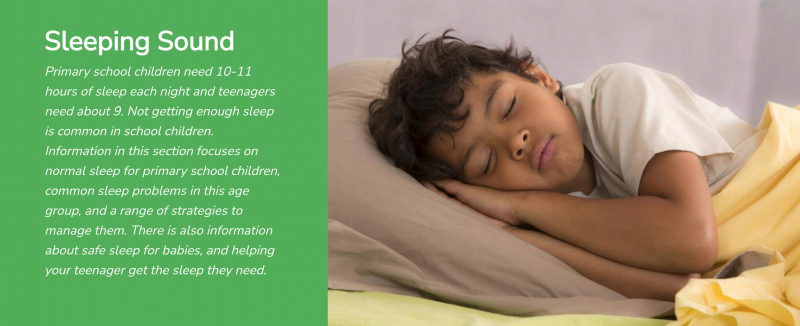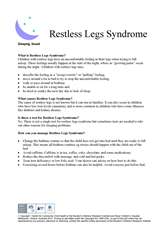Restless Legs Syndrome
Restless Legs Syndrome
Children with restless legs have an uncomfortable feeling in their legs when trying to fall asleep. If your child has restless legs, find out how you can manage this.
Key points about Restless Legs Syndrome:
- children with restless legs have an uncomfortable feeling in their legs when trying to fall asleep
- the cause of restless legs is not known but it can run in families
- children with restless legs may describe the feeling as a 'creepy/crawly' or 'pulling' feeling
- there is no single test for Restless Legs Syndrome, but sometimes tests are needed to rule out other reasons for sleeping problems
- change your child's bedtime routine so that your child does not get into bed until they are ready to fall asleep
This page is about sleep in primary school children. It's part of a whole section on sleeping sound.
What is Restless Legs Syndrome?
Children with restless legs have an uncomfortable feeling in their legs when trying to fall asleep. These feelings usually happen at the start of the night, whereas 'growing pains' occur during the night. Children with restless legs may:
- describe the feeling as a 'creepy/crawly' or 'pulling' feeling
- move around a lot in bed to try to stop the uncomfortable feeling
- walk or pace around at bedtime
- be unable to sit for a long time and
- be tired or cranky the next day due to lack of sleep
What causes Restless Legs Syndrome?
The cause of restless legs is not known but it can run in families. It can also occur in children who have low iron levels (anaemia), and is more common in children who have some illnesses like diabetes and kidney disease.
Is there a test for Restless Legs Syndrome?
No. There is not a single test for Restless Legs Syndrome but sometimes tests are needed to rule out other reasons for sleeping problems.
How can I manage Restless Legs Syndrome?
Change the bedtime routine so that your child does not get into bed until they are ready to fall asleep. This means all bedtime routines (for example, stories) should happen with your child out of the bed.
- avoid caffeine - caffeine is in tea, coffee, cola, chocolate, and some medications
- reduce the discomfort with massage and cold and hot packs
- treat iron deficiency or low folic acid - your doctor can advise on how best to do this
- exercising several hours before bedtime can also be helpful - avoid exercise just before bed
See more KidsHealth content on sleeping sound
This page last reviewed 16 March 2023.
Do you have any feedback for KidsHealth?
If you have any feedback about the KidsHealth website, or have a suggestion for new content, please get in touch with us.
Email us now

